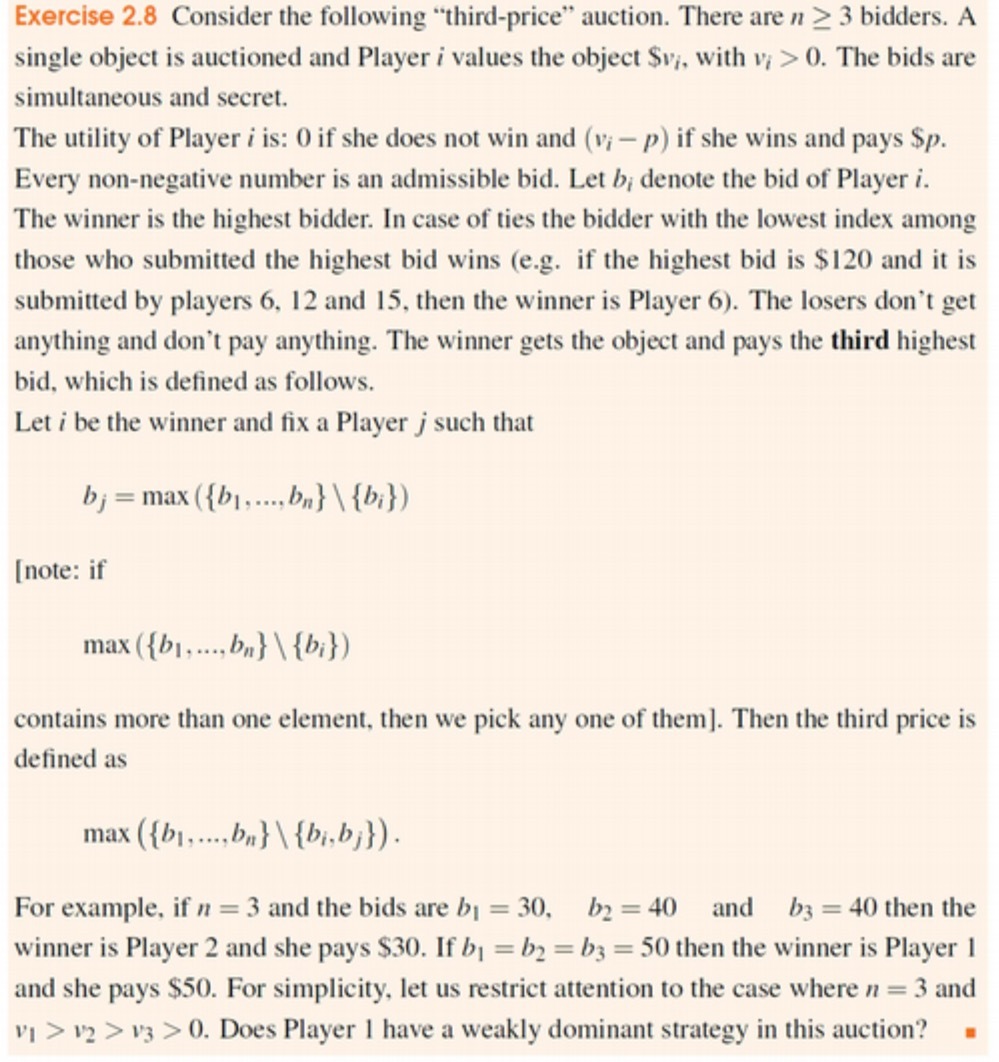Answered step by step
Verified Expert Solution
Question
1 Approved Answer
Exercise 2.8 Consider the following third-price auction. There are n 3 bidders. A single object is auctioned and Player i values the object $v,,

Exercise 2.8 Consider the following "third-price" auction. There are n 3 bidders. A single object is auctioned and Player i values the object $v,, with v; >0. The bids are simultaneous and secret. The utility of Player i is: 0 if she does not win and (vi-p) if she wins and pays $p. Every non-negative number is an admissible bid. Let b; denote the bid of Player i. The winner is the highest bidder. In case of ties the bidder with the lowest index among those who submitted the highest bid wins (e.g. if the highest bid is $120 and it is submitted by players 6, 12 and 15, then the winner is Player 6). The losers don't get anything and don't pay anything. The winner gets the object and pays the third highest bid, which is defined as follows. Let i be the winner and fix a Player j such that bj = max({bb}\ {bi}) [note: if max({b, b}\{bi}) contains more than one element, then we pick any one of them]. Then the third price is defined as max ({bb}\ {bi,b;}). For example, if n = 3 and the bids are b = 30, b2 = 40 and b3 = 40 then the winner is Player 2 and she pays $30. If b = b2 = b3 = 50 then the winner is Player 1 and she pays $50. For simplicity, let us restrict attention to the case where n = 3 and v1 > v2 > v3 > 0. Does Player 1 have a weakly dominant strategy in this auction?
Step by Step Solution
There are 3 Steps involved in it
Step: 1

Get Instant Access to Expert-Tailored Solutions
See step-by-step solutions with expert insights and AI powered tools for academic success
Step: 2

Step: 3

Ace Your Homework with AI
Get the answers you need in no time with our AI-driven, step-by-step assistance
Get Started


